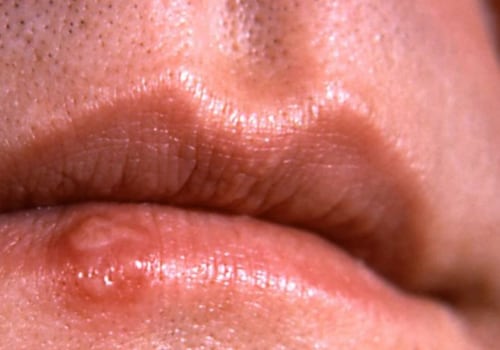If you are a woman and suspect that you may have a sexually transmitted infection (STI), it is important to be aware of the signs and symptoms that may indicate an infection. An STI may be indicated by pain or a burning sensation when you urinate, the need to urinate more often, or the presence of blood in the urine. The appearance and consistency of vaginal discharge can also change continuously throughout a woman's cycle or even in the absence of a cycle. You may also feel pain and tenderness in your genital area until the infection goes away.
During an initial episode, you may have flu-like signs and symptoms, such as headache, muscle aches and fever, as well as swollen lymph nodes in your groin. Some women have symptoms of STDs within days or weeks of getting the infection, but others take longer or may never have symptoms at all. It is common for women to show few or no symptoms, so it is possible to live with an STI without realizing it for a long time. The incubation period for STDs, which is the time between when you get an infection and the first symptoms appear, varies depending on the type of infection. For example, if you have herpes, you will continue to have it for the rest of your life. Although sores heal within a few weeks after they appear, the virus is still present even when there are no symptoms.
It may reactivate weeks, months, or years in the future and cause another outbreak of sores. After the initial outbreak, subsequent outbreaks tend to be milder. Many women with HIV don't know they have it for a long time after being infected. This is because it is common to show no symptoms for weeks, months, or even years. Some people have flu-like symptoms within the first 2 to 4 weeks of infection during the acute phase (the first phase of HIV).
The symptoms of HIV often resemble those of less serious illnesses and can be easily ignored or overlooked. In addition, HIV can affect women in unique ways, so they may experience changes in their menstrual cycle or experience menopausal symptoms sooner than other women. In women, syphilis symptoms can easily be overlooked or ignored. The sores may be confused with ingrown hairs or harmless bumps, or they may appear internally or in places that are difficult to see. In addition, syphilis can be confusing and misleading because it goes through different stages with different symptoms and there may be times when you don't have any symptoms.
According to the Centers for Disease Control and Prevention (CDC), the onset of the first symptoms of syphilis can range from 10 to 90 days after infection. The time it takes for any symptoms of a particular STI (or STI) to appear after exposure, if any, will vary depending on the specific cause. If you stop taking the medication on time, even if the symptoms of the STI have resolved, the infection could remain in your body. Women often confuse symptoms of STDs, such as discharge, smell, burning, and itching, with something else, such as a urinary tract infection or a fungal infection.







